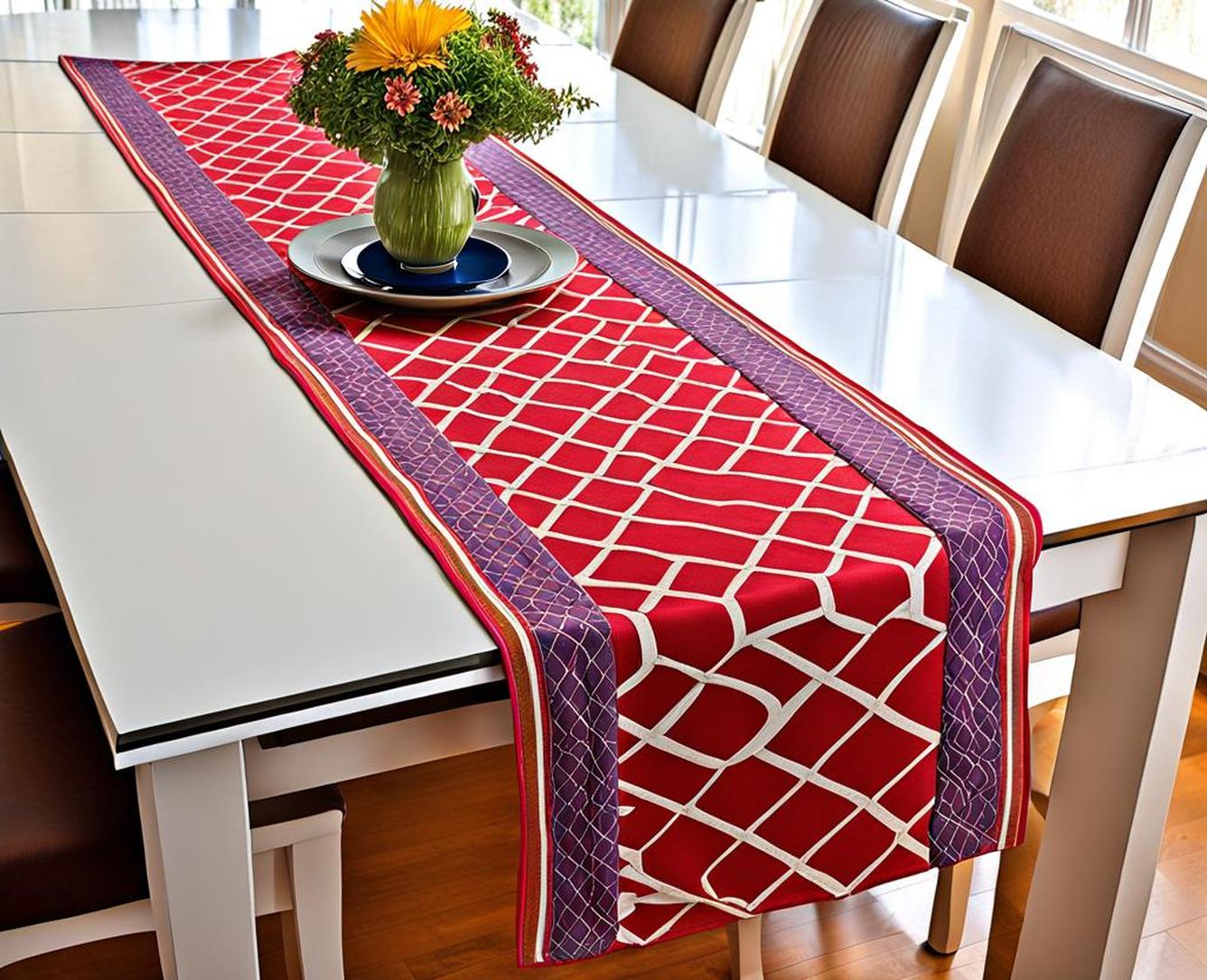Have you ever purchased a beautiful table runner for your dining room, only to find it looks undersized and out of place? Or maybe you chose an oversized runner that drapes onto the floor, creating a potential tripping hazard. It can be tricky to identify the perfect table runner size for your unique dining table.
Not to worry! We’ll share standard size guidelines while still accounting for your personal preferences. With these insider design tips, you’ll be able to find a table runner with just the right proportions to elevate your dining room.
Measure Your Table Properly
Before assessing standard table runner sizes, you’ll need accurate measurements of your own dining table. Grab a flexible tape measure and paper to note dimensions as you quantify the size and shape of your table.

Determine Table Shape
The most common table shapes are:
- Rectangular: Most traditional table design; versatile for small and large spaces.
- Round: Creates an intimate, cozy feel. Pay attention to diameter size.
- Oval: Elongated round shape; centerpiece dimensions are key.
- Other Unique Shapes: Measure all angles and sides to capture full dimensions.
Identify Table Dimensions
Note these key measurements:
- Length and width (or diameter for round tables)
- Leg spacing under table
- Location of legs relative to shape (corners, sides, etc.)
Account for Table Leaves
If your dining table includes inset leaves to expand its size, document both:
- Maximum expanded size with leaves inserted
- Fully collapsed size without any leaves
Standard Table Runner Widths
While your runner’s length will vary based on dining table proportions, most sources recommend standard width guidelines.
Typical Width Range
Most table runners fall between:
- 14 to 18 inches for average dining tables
- 12 to 24 inches for very narrow or wide tables
Guideline of 1/3 Table Width
A commonly recommended best practice is for your table runner to be about 1/3 the full width of your dining table. This creates pleasant proportions between the two elements.
Handle Variations in Width
Feel free to play with different visual effects by adjusting your runner’s width. For example:
- Wider at the ends to create a dramatic flair
- Consistent width throughout for a tailored look
Appropriate Table Runner Lengths
While width ranges are fairly standard, runner length can vary greatly depending on your specific table size and shape.
Minimum Overhang Length
Most design experts recommend your table runners should hang over the edge of your dining table by at least:
- 12 inches on each side
This overhang length prevents your place settings and decor pieces from feeling crowded or cluttered. It also enables easy access without needing to lift or rearrange your runner.
Maximum Overhang Length
On extra large dining tables, some designers allow table runners to extend up to:
- 18 inches over the edges
If your runner is almost touching the floor, however, it generally appears overly large for the table itself. Reign in extremely long lengths to maintain balance.
Extending Past Both Ends
To create a uniform, tailored appearance, most standard table runners:
- Drape evenly over both ends of your rectangular dining table
- Maintain consistent length on either side
Other Size Considerations
While width and length guidelines provide a useful starting point, don’t be afraid to also factor in qualitative design considerations to select your perfect custom runner size. Here are some additional elements that could impact your size selection.
Table Shape
Consider variations in your runner dimensions if using:
- Round vs. rectangular tables
- Extension leaves that modify table proportions
Table Purpose
Determine if your dining table will primarily be used for:
- Formal multi-course dinners
- Everyday family meals
Then, choose your runner size to match. For example, longer runners help set a more elegant tone for special events.
Placement and Traffic Flow
Note if your dining table location may limit runner size, like:
- High foot traffic zones
- Small spaces with limited clearance
In these situations, narrower and shorter table runners can help maximize functionality.
Tips for Measuring Your Custom Table Runner
Looking to sew a custom-sized table runner perfectly scaled for your dining table? Use these pro tips for measuring and cutting your fabric:
- Use a soft flexible tape measure for easiest accuracy.
- Create a paper template first to test sizing and proportions.
- Mark intended dimensions lightly in pins on your runner fabric.
- When cutting, leave at least 0.5 inch seam allowance for hems or edges.
Finding the perfect dining table runner size involves both precise measurements and thoughtful design consideration. Start by quantifying your exact table proportions, then use our standard width and length guidelines to identify your ideal size range. Don’t forget to also factor in qualitative elements like shape, purpose, and placement constraints. With this comprehensive sizing methodology, you’re sure to discover a beautiful table runner with flawlessly fitted dimensions to elegantly anchor your dining room.
For further questions about measuring for custom table runners or shopping our collection of stylish designs, feel free to drop us a line anytime. Let’s create a warm, welcoming dining space you can gather around for years to come!
